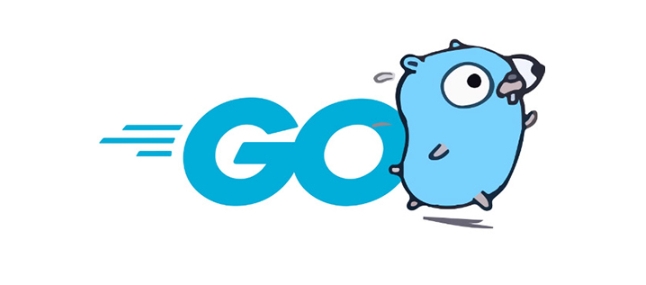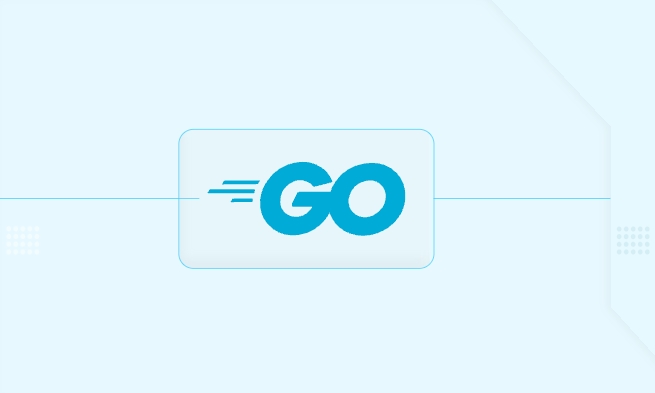To judge that goroutine leaks, you can observe the increase in the number of numbers through runtime.NumGoroutine() or use pprof to view stack information; common scenarios include: 1. Send to the closed channel or receive from the non-write channel, causing blockage; 2. Forgot to close the channel, causing the consumer to be unable to exit; 3. Not canceling the context causes task suspension; the recommended practices are to use select default or context to control the life cycle, close the channel in time and set a timeout, and use defer cancel() to release the context; the testing tools, pprof, and leaktest libraries can be used to assist in detection; summary techniques include clarifying the exit conditions, using the reasonable use of context and channel, and adding leak checks to unit tests.

Goroutine Leak in Go means that some goroutines do not exit normally after startup, resulting in continuous resource utilization, which may eventually exhaust system resources or cause performance problems. Although Go's concurrent model is lightweight and efficient, once a leak occurs, it is not easy to troubleshoot.

To discover and solve goroutine leak, the key is to understand its common scenarios and make good use of relevant tools.

How to tell if there is a goroutine leak?
The most intuitive way is to get the number of currently active goroutines through runtime.NumGoroutine() . If this number continues to grow and does not decline after the program runs for a period of time, there is a very likely leak.
An easy way is to print the current goroutine number at the critical node of the program:

fmt.Println("Current goroutines:", runtime.NumGoroutine())In addition, you can also use the pprof tool to observe the status distribution of goroutines:
import _ "net/http/pprof"
go func() {
http.ListenAndServe(":6060", nil)
}() Visit /debug/pprof/goroutine?debug=1 to see all currently active goroutine stack information, which helps locate unexited coroutines.
Several common cases of goroutine leakage
1. Send data to the closed channel or receive data from the unwritten channel
This is one of the most common causes of goroutine leaks. for example:
ch := make(chan int)
go func() {
<-ch // If no one writes data to ch, this goroutine will keep blocking}()In this case, goroutine will hang forever and cannot exit.
Suggested practices:
- Ensure that each receive operation has a corresponding sender;
- Use
selectdefaultto avoid deadlocks; - Or use context to control the life cycle.
2. Forgot to close the channel, causing the waiter to be unable to exit
For example, waiting for channel data in a loop, but the producer exits early and the channel is not closed, and the consumer will block for a long time.
for v := range ch { // If ch is not closed, I will wait here for fmt.Println(v)
}Suggested practices:
- After the production party completes the task, remember to close the channel;
- When the consumer handles, set the timeout mechanism in combination with
context.
3. Forgot to cancel the context, causing the goroutine to fail to exit
Many network requests and database calls rely on context.Context to control the life cycle. If you forget cancel, the background task may be hang.
ctx, _ := context.WithCancel(context.Background()) go doSomething(ctx) // Forgot to call cancel()
Suggested practices:
- Use
defer cancel()to ensure that the context can be released correctly; - For long-cycle tasks, consider setting deadline or timeout.
Use tools to assist detection
Use -test.coverprofile or pprof to detect leaks
Go's own testing tools can be used to detect potential leaks:
go test -bench=. -benchmem -cpu=4 -coverprofile=coverage.out
In addition, pprof provides detailed goroutine stack information, which can help you quickly find "stuck" coroutines.
Use gRPC or third-party libraries for integrated detection
Some projects have introduced test libraries like leaktest to check whether there are active goroutines after unit tests are finished.
defer require.LeakCheck(t)
This method is suitable as a quality assurance method in CI.
Summary of some practical skills
- All started goroutines must have clear exit conditions;
- Use context to control the life cycle more frequently;
- Before channel operation, make sure there is a sender/receiver;
- Use defer to close the resource or cancel the context;
- Regularly use pprof to check the goroutine distribution;
- Add leak check to unit tests;
Basically all this is it. Although goroutine leakage is hidden, it can still be effectively avoided as long as the structure is clear and the logic is controllable.
The above is the detailed content of golang goroutine leak detection. For more information, please follow other related articles on the PHP Chinese website!

Hot AI Tools

Undress AI Tool
Undress images for free

Undresser.AI Undress
AI-powered app for creating realistic nude photos

AI Clothes Remover
Online AI tool for removing clothes from photos.

Clothoff.io
AI clothes remover

Video Face Swap
Swap faces in any video effortlessly with our completely free AI face swap tool!

Hot Article

Hot Tools

Notepad++7.3.1
Easy-to-use and free code editor

SublimeText3 Chinese version
Chinese version, very easy to use

Zend Studio 13.0.1
Powerful PHP integrated development environment

Dreamweaver CS6
Visual web development tools

SublimeText3 Mac version
God-level code editing software (SublimeText3)

Hot Topics
 What are the implications of Go's static linking by default?
Jun 19, 2025 am 01:08 AM
What are the implications of Go's static linking by default?
Jun 19, 2025 am 01:08 AM
Go compiles the program into a standalone binary by default, the main reason is static linking. 1. Simpler deployment: no additional installation of dependency libraries, can be run directly across Linux distributions; 2. Larger binary size: Including all dependencies causes file size to increase, but can be optimized through building flags or compression tools; 3. Higher predictability and security: avoid risks brought about by changes in external library versions and enhance stability; 4. Limited operation flexibility: cannot hot update of shared libraries, and recompile and deployment are required to fix dependency vulnerabilities. These features make Go suitable for CLI tools, microservices and other scenarios, but trade-offs are needed in environments where storage is restricted or relies on centralized management.
 How do I create a buffered channel in Go? (e.g., make(chan int, 10))
Jun 20, 2025 am 01:07 AM
How do I create a buffered channel in Go? (e.g., make(chan int, 10))
Jun 20, 2025 am 01:07 AM
To create a buffer channel in Go, just specify the capacity parameters in the make function. The buffer channel allows the sending operation to temporarily store data when there is no receiver, as long as the specified capacity is not exceeded. For example, ch:=make(chanint,10) creates a buffer channel that can store up to 10 integer values; unlike unbuffered channels, data will not be blocked immediately when sending, but the data will be temporarily stored in the buffer until it is taken away by the receiver; when using it, please note: 1. The capacity setting should be reasonable to avoid memory waste or frequent blocking; 2. The buffer needs to prevent memory problems from being accumulated indefinitely in the buffer; 3. The signal can be passed by the chanstruct{} type to save resources; common scenarios include controlling the number of concurrency, producer-consumer models and differentiation
 How does Go ensure memory safety without manual memory management like in C?
Jun 19, 2025 am 01:11 AM
How does Go ensure memory safety without manual memory management like in C?
Jun 19, 2025 am 01:11 AM
Goensuresmemorysafetywithoutmanualmanagementthroughautomaticgarbagecollection,nopointerarithmetic,safeconcurrency,andruntimechecks.First,Go’sgarbagecollectorautomaticallyreclaimsunusedmemory,preventingleaksanddanglingpointers.Second,itdisallowspointe
 How can you use Go for system programming tasks?
Jun 19, 2025 am 01:10 AM
How can you use Go for system programming tasks?
Jun 19, 2025 am 01:10 AM
Go is ideal for system programming because it combines the performance of compiled languages ??such as C with the ease of use and security of modern languages. 1. In terms of file and directory operations, Go's os package supports creation, deletion, renaming and checking whether files and directories exist. Use os.ReadFile to read the entire file in one line of code, which is suitable for writing backup scripts or log processing tools; 2. In terms of process management, the exec.Command function of the os/exec package can execute external commands, capture output, set environment variables, redirect input and output flows, and control process life cycles, which are suitable for automation tools and deployment scripts; 3. In terms of network and concurrency, the net package supports TCP/UDP programming, DNS query and original sets.
 How do I call a method on a struct instance in Go?
Jun 24, 2025 pm 03:17 PM
How do I call a method on a struct instance in Go?
Jun 24, 2025 pm 03:17 PM
In Go language, calling a structure method requires first defining the structure and the method that binds the receiver, and accessing it using a point number. After defining the structure Rectangle, the method can be declared through the value receiver or the pointer receiver; 1. Use the value receiver such as func(rRectangle)Area()int and directly call it through rect.Area(); 2. If you need to modify the structure, use the pointer receiver such as func(r*Rectangle)SetWidth(...), and Go will automatically handle the conversion of pointers and values; 3. When embedding the structure, the method of embedded structure will be improved, and it can be called directly through the outer structure; 4. Go does not need to force use getter/setter,
 What are interfaces in Go, and how do I define them?
Jun 22, 2025 pm 03:41 PM
What are interfaces in Go, and how do I define them?
Jun 22, 2025 pm 03:41 PM
In Go, an interface is a type that defines behavior without specifying implementation. An interface consists of method signatures, and any type that implements these methods automatically satisfy the interface. For example, if you define a Speaker interface that contains the Speak() method, all types that implement the method can be considered Speaker. Interfaces are suitable for writing common functions, abstract implementation details, and using mock objects in testing. Defining an interface uses the interface keyword and lists method signatures, without explicitly declaring the type to implement the interface. Common use cases include logs, formatting, abstractions of different databases or services, and notification systems. For example, both Dog and Robot types can implement Speak methods and pass them to the same Anno
 How do I use string functions from the strings package in Go? (e.g., len(), strings.Contains(), strings.Index(), strings.ReplaceAll())
Jun 20, 2025 am 01:06 AM
How do I use string functions from the strings package in Go? (e.g., len(), strings.Contains(), strings.Index(), strings.ReplaceAll())
Jun 20, 2025 am 01:06 AM
In Go language, string operations are mainly implemented through strings package and built-in functions. 1.strings.Contains() is used to determine whether a string contains a substring and returns a Boolean value; 2.strings.Index() can find the location where the substring appears for the first time, and if it does not exist, it returns -1; 3.strings.ReplaceAll() can replace all matching substrings, and can also control the number of replacements through strings.Replace(); 4.len() function is used to obtain the length of the bytes of the string, but when processing Unicode, you need to pay attention to the difference between characters and bytes. These functions are often used in scenarios such as data filtering, text parsing, and string processing.
 How do I use the io package to work with input and output streams in Go?
Jun 20, 2025 am 11:25 AM
How do I use the io package to work with input and output streams in Go?
Jun 20, 2025 am 11:25 AM
TheGoiopackageprovidesinterfaceslikeReaderandWritertohandleI/Ooperationsuniformlyacrosssources.1.io.Reader'sReadmethodenablesreadingfromvarioussourcessuchasfilesorHTTPresponses.2.io.Writer'sWritemethodfacilitateswritingtodestinationslikestandardoutpu






